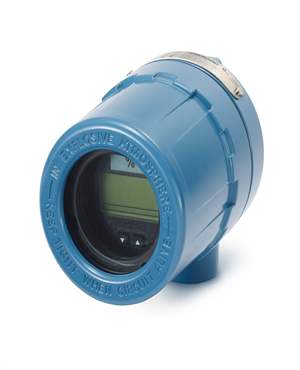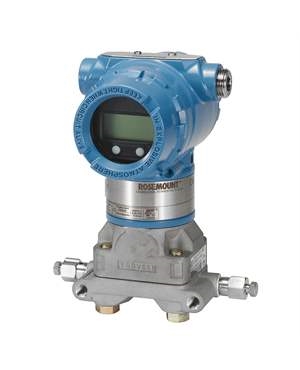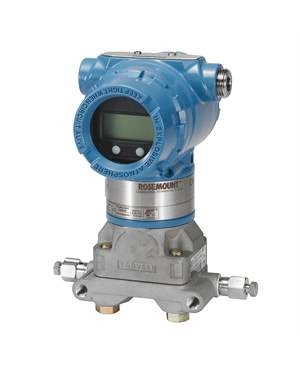Testing Pressure Gauges: Processes of Verification Test and Functional Test
Brian Craig
May 28, 2021
Pressure gauges are the industrial equipment used for measuring pressure fluctuations. Generally, they are installed on the fluid transmission lines in industrial supply systems, fluid-operated equipment, etc. Pressure plays a crucial role in industrial process control. Hence the pressure gauges are of great significance. However, the performance of these gauges should be precise and accurate, otherwise, sudden pressure buildup, pressure drop, etc can cause damage to the industrial systems. This is why testing the pressure gauges before an application is essential. These gauges are often tested, calibrated, and validated before and during the application. The testing plays the most significant role in ensuring the performance and verification of these devices. There are multiple ways of testing gauges. Out of which functional testing and verification testing are mandatory and are performed by the manufacturers or users of these gauges. This post discusses the processes of verification and functional tests for these gauges.

A Brief Discussion on Pressure Gauges
Pressure gauges are devices that can sense the fluctuation in pressure. These devices feature sensing elements like diaphragms, bourbon tubes, springs, etc. These sensing elements react to pressure changes. There are different types of gauges depending on the type of sensing element used and the type of displays it possesses. Generally, analog and digital gauges are used in various industries.
No matter what type of gauge it is, the need for testing remains of great importance. Let us discuss the significance of testing gauges.
Significance of Testing Pressure Gauges
Gauges are tested for various aspects such as accuracy, performance parameters, efficiency, etc. Based on the testing results, the activities such as calibration, maintenance, troubleshooting can be performed. If the pressure gauges are not tested, there will be errors in assembly, installation, and operation. Slight errors in installation or assembly of the gauge may result in leakages, high-pressure buildup, sudden pressure drop, etc. This may eventually result in the bursting of fluid lines, which may cause potential damage to the operator. Thus, to prevent the chances of accidents, it is essential to test the gauges. Verification testing and functional testing are two methods adopted in the industries. Let us discuss both.
Verification Testing
Verification testing is one of the steps involved in the calibration of gauges. In this step, the performance parameters of the working gauge are compared to master gauges’ parameters. This ensures that the gauge is operating to the best of its capabilities.
- Pre-requisites
- Master Gauge/ Calibrator
- Disintegration Toolkit (For priming)
- Valves (For Isolation of Gauge)
- Procedure
The following steps are involved in verification testing.
- Disintegrate the gauge from the industrial system or isolate it using valves.
- If the system consists of any liquid fluid then release the air or gas trapped in the gauge or fluid transmission line. This may require priming the entire system.
- Connect the working gauge to the reference gauge i.e.; the calibrator or master gauge. Run the system and measure the readings on both the gauges.
- Compare both the readings.
- If the readings are the same, the gauges can be concluded verified. If not, then the error calculation should be done in order to move ahead with the calibration process.
Notes:
- The master gauge is the device tried and tested for the best efficiency of the gauges. It is used as a reference for the calibration process, therefore, known as a calibrator.
- Before measuring the pressure readings on the working gauge and calibrator, let the system settle for a while. This reduces fluctuation in the reading.
Functional Testing
A functional test is performed to check for consistency in the operational capabilities of the gauges.
- Pre-requisites
- Dead-weight testers
- Test Gauge/ Reference Gauge
- Procedure
The listed steps are involved in a functional test of pressure gauges.
- Cross-check the measuring range of the gauge from the manufacturer’s datasheets.
- Connect the gauge and reference gauge in the same pressurized industrial setup.
- Decide 5 point ranges such as 0%, 25%, 50%, 75%, and 100% on the measuring pressure range of the working equipment.
- Begin with 0% pressure and raise the pressure slowly up to 100%.
- Take readings on each point from both the gauges.
- Compare the readings at all 5 points.
- Reverse the process and drop the pressure from 100% to 0%.
- Record readings during the reversed cycle.
- Compare the readings of pressure rising and dropping cycles. Compare the readings with the reference gauge’s readings.
Since testing is a crucial part of calibration and maintenance, it should be performed by experts to avoid errors. That is why you should source gauge testing and calibration services from experts like The Transmitter Shop. The company offers high-quality gauges, transmitters, etc along with reliable testing, maintenance, and calibration services.
Related Posts
- What are the Steps Involved in Calibrating Pressure Gauge?
- All Important Questions on Reconditioned Transmitters Answered
- Is Remanufactured Transmitter a Better Option than a New One?
- Differential Pressure Transmitters: How Do They Help in Flow Measurements?
- 3 Whats that Explain How Often You Should Calibrate Pressure Transducer
- Guidelines for Troubleshooting Pressure Transducers
- Learn How to Calibrate a Pressure Transmitter – II
- Learn How to Calibrate a Pressure Transmitter
- Know Three Interesting Uses of Pressure Transmitters
- Things to Check before Buying a New Pressure Transmitter
- A Look at Various Types of Industrial Transmitters – Part II
- A Look at Various Types of Industrial Transmitters Part I
- All Questions on Smart Transmitters and their Calibration Answered
- 3 Major Pressure Transmitter Technologies That Made the Device Popular
- An Unconventional Guide to Selecting the Right Pressure Sensor
- Factors To Be Considered While Differentiating $40 and $400 Pressure Transmitters
- Tips to Augment the Performance and Service Life of Pressure Transmitter
- Factors of Consideration When Choosing Pressure Transmitters
- 5 Most Popular Pressure Transmitter Technologies
- Tips to Improve the Performance of Pressure Sensors
- Factors to Consider When Choosing a Pressure Transmitter Manifold
- Safety Tips for Differential Pressure Transmitter Operation
- Impact of Shock and Vibration on Pressure Transducer
- Rosemount 3051S vs 3051C Transmitter – What is Your Choice?
- Rosemount 2088 Vs Rosemount 3051 – A Few Points of Differences Discussed
- Difference in Conventional Transmitters and Smart Transmitters
- How to Choose Diaphragm Seals for Your Application?
- How to Select Pressure Transmitter for Your Application?
- Remote Seals: Significance, Working Principle & Applications
- How Do You Calibrate A Flow Transmitter?
- What is Absolute Pressure Transmitter & how does it work?
- HART Communication Protocol: Overview, Working Principle, Benefits in Industrial Automation
- Absolute and Gauge Pressure Transmitters - Overview and Working Principle
- Flow Meter vs Flow Transmitter: Know the Difference
- How Do You Test for 4 to 20mA Signal in a Pressure Transmitter?
- Multivariable Transmitter: What Is It and How Does It Work?
- Pressure Transmitters vs. Pressure Transducers: Learn the Differential Characteristics
- Procedure to Calculate Accuracy of Pressure Transmitter Discussed
- Testing Pressure Gauges: Processes of Verification Test and Functional Test
- An Ultimate Selection Guide for Flow Transmitters
- The Benefits and Challenges of HVAC System Balancing
- Fluid Flow Isolation Techniques for Pressure Instrumentation
- Understanding Pressure Ranges and Units for Fluid System Monitoring
- Understanding the Impact of Pressure Fluctuations on Drying Performance
- Monitoring and Controlling Energy Production in Power Plants
- Common Challenges in Air Flow Measurement and How to Overcome Them
- Pressure Monitoring in Pump Systems: A Comprehensive Guide
- Exploring Density and Viscosity Measurement in Industrial Processes
- Pneumatic Pressure Controllers: A Safe Choice for Hazardous Areas
- A Practical Guide to Vacuum Measurement and Operation
- Key Sensors for Monitoring Emissions in Wet and Dry Scrubber Systems
- Complete Hydrogen Gas Safety and Measurement Solutions
- Steam Boiler Drum Level Measurement A Comparison of Control System Technologies
- Furnace Flame Sensor Faults Everything You Need to Know for Safe Operation
- Comparison between Multi Valve Manifolds Block Valves and Bleed Valves
- Furnace Flame Sensor Faults Everything You Need to Know for Safe Operation
- Pneumatic Pressure Controllers: A Safe Choice for Hazardous Areas
- How Can Greenhouse Gas Emissions Be Reduced?
- A Practical Guide to Vacuum Measurement and Operation
- Understanding Electrochemical Detection: Principles, Techniques and Environmental Application
QUICK ENQUIRY







